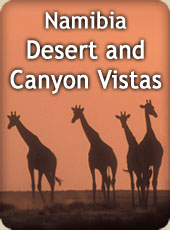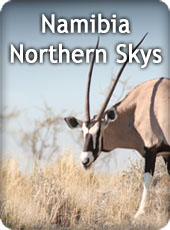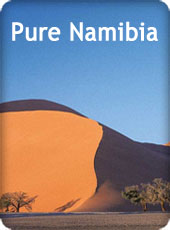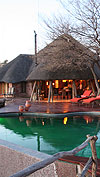Namibia, Unique rugged beauty
Quick Reference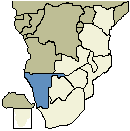
View detailed Map
Currency:
1 Namibia Dollar (NAD) = 100 cents
Capital:Windhoek
Time:
GMT +1 or
GMT +2 first Sunday in April to first Sunday in September
Main Languages: English, German and Oshvambo
Climate: Warm and dry north to humid coastal south. Temperate inland.
Electricity: 220 volts, 50Hz. Round three-pin plugs
Namibia is a country rich in natural resources. Visitors can enjoy its unique rugged and barren beauty with desert landscapes, sunshine and wildlife.
It has a diversity of natural habitats: the rugged coastline and haunting beauty of the Skeleton Coast, the endless stretch of undulating ochre-coloured sand dunes at Sossusvlei, the impressive gorge of the Fish River Canyon winding through the arid landscape of the great plateau, and the vast salt pan of Etosha National Park, one of the world’s greatest wildlife viewing venues.
The old German colonisation is evident in the language, food and architecture, particularly in the capital city of Windhoek.
The indigenous tribes tried vigorously to retain their independence, and in 1904 a major uprising by the Herero and Nama people resulted in massive genocide retaliation by the colonialists, with an estimated 60 percent of the native population in the south being wiped out. Today the population consists of 11 main ethnic groups.
The best time to travel to Namibia is during the winter, between March and October.

